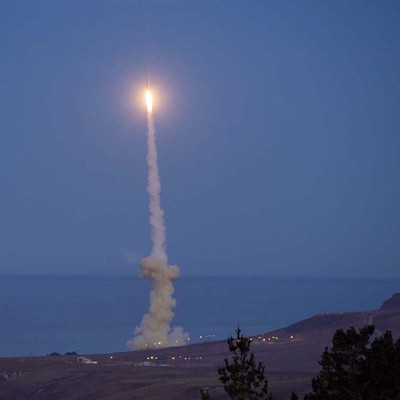Fourteen months ago, Space Force acquisition chief Frank Calvelli released acquisition guidelines, or principles, aimed at helping the service buy smaller, cheaper satellites and move away from bulky, delay-prone programs. Now Calvelli wants to step up those reforms.
I’m really happy with them and I wouldn’t change a thing. In fact, I would be doubling down on that now, he said at the Aerospace and Defense Planning Conference at Aviation Week in November.
Next year, Calvelli expects the Space Force to finally implement some of its Troubled Child programs, including a space command and control system called ATLAS, or Advanced Tracking and Launch Analysis System; and a new ground station to control the Pentagon’s GPS satellite constellation, called GPS Next Generation Operational Control Segment (OCX).
Calvelli said in November that the projects were facing delays due to major software development failures. We’ve seen big software fail, and OCX fits that mold perfectly. This is a very large and complex software system that also faces challenges.
ATLAS will replace the Pentagon’s 45-year-old Space Defense Operations Center (SPADOC). It was originally scheduled to be completed in 2022, but its baseline capability is now expected to be reached in August. Air Force officials said it will enter service only after an operational trial period, the length of which has not been finalized.
The OCX plan, which will replace the existing ground station, is more than seven years behind schedule. Delivery is planned for June, but development testing, crew training and other activities will make it inoperable until February 2025, department officials said.
The system will be operational when it can support command and control of all GPS III and legacy GPS space vehicles, monitor and broadcast GPS navigation signals, and support mission planning, the official said.
Calvelli said he will continue to promote the OCX and ATLAS projects.
Next year will also see the service test two variants of cards designed to help GPS receivers resist interference. According to the official, these Military GPS User Equipment Increment 1 ground cards (MGUE) have completed development and are being integrated and deployed on ground platforms.
The official said the final two procurement milestones for the aviation and maritime card development program are expected to be operational testing on an Air Force B-2 bomber next July and on a Navy DDG-class destroyer in October.
More new product releases
Next year, the Space Force will nearly double the number of national security space launches, from 12 launches in fiscal 2023 to 21 in 2024.
Of the 21 missions, ULA will launch 11 times and SpaceX will launch 10 times. The Pentagon is working to steer new companies into the heavy-lift market dominated by these two companies. Last February, officials announced that the next satellite launch competition would divide dozens of launch bids into two groups: Group 1 for more risk-tolerant missions, and Group 2 for more challenging and critical missions. task. They said they will select three companies for Lane 2, which will be launched in 2025.
Still, officials insist they are not concerned about the Pentagon’s reliance on Elon Musk’s SpaceX to launch critical satellites into space. Calvelli said in November that SpaceX has done a great job revolutionizing space access.
However, he said ULA’s Vulcan Centaur rocket will compete with SpaceX’s Falcon 9 and needs to be launched soon. The long-delayed heavy-lift rocket is now scheduled to launch in early 2024.
We need Vulcan. Showing up to the party a few years too late. We’re excited to see the success of other competitor rockets like Blue Origin, and the folks at Rocket Lab have plans for future rockets. So there’s a lot to roll out, and the more the merrier, Calvelli said.
The industry has been focused on getting payloads into space as quickly as possible as the Space Force attempts to diversify the launch market. The service set a record for the fastest launch in 2023, launching a satellite 27 hours after receiving the order.
This is part of the Victus Nox program, which will allow the Pentagon to quickly respond to space threats or enhance degraded or compromised U.S. space systems. Having this capability is critical for the Space Force to maintain a resilient constellation of hundreds of military satellites and quickly send more satellites there if one is damaged.
The Space Development Agency, one of the acquisition arms of the Space Force, began building the constellation in 2023, launching a batch of satellites into low Earth orbit. The constellation, known as the Proliferated Warrior Space Architecture, will begin providing combat capabilities to warfighters in 2024.
#happen #Space #Force #acquisitions
Image Source : www.defenseone.com
